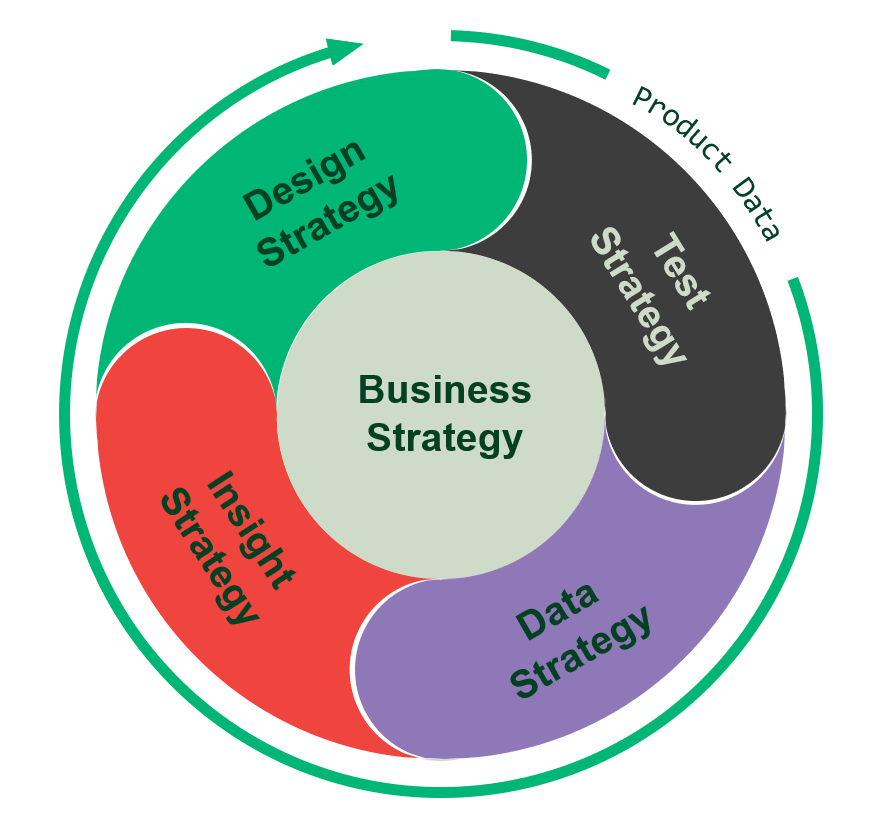DAVID HALL, Global GTM Leader, Semiconductor at NI
In today’s competitive market, product innovators are looking for ways to stand out from the crowd. Many are finding answers in product data and analytics, using it to refine their processes and address the challenges of product customization, supply chain volatility, increasing product complexity, and shrinking time to market.
Our research shows that organizations with advanced product data strategies outperform those with limited strategies. Used effectively across the whole product lifecycle, product data can help you win market share, innovate faster and more effectively, and improve employee productivity, speed to market, and sub-component quality. Across every metric, it’s clear companies with advanced strategies are pulling ahead.
Build the foundation
Organizations shouldn’t rush to invest in a complex data strategy without laying the appropriate foundations. That means thinking about all of the phases and processes related to bringing products to market. Our research shows that the test function is often overlooked, and that test data provides valuable information that is often underutilized. Implementing standardization means scaling points of success across the business by establishing a consistent standard that will drive quality and efficiency up and costs down.

Each company’s approach to standardization will vary according to its industry and existing product lifecycle. Still, it begins by defining processes, systems, software, and data leveraged across functional departments. By standardizing these key areas, companies can ensure consistent outputs and save time on each stage of the product lifecycle, helping them meet shrinking time-to-market schedules for increasingly complex products. This holistic approach will also lead to better quality outputs, as each stage of the product lifecycle will benefit from more visibility and rigor in its development. Lastly, the act of standardization instills centralized perspective, authority, and governance within an organization, which are all essential if a holistic data strategy is going to be successful.
“Think of standardization as a catalyst for success,” says Mike Santori, NI Fellow. “The ultimate goal is to gain insights from data across the lifecycle of your product. Companies need to think of all aspects of the product lifecycle – design, test, manufacturing and in-use. Best-in-class organizations are not thinking of these lifecycle phases in isolation. They are breaking down silos, developing corporate strategies and standards, and making connections through data that enable more successful business outcomes.”
The benefits of this cascade through the business, driving not only product optimization, but also efficiencies in people and processes—a key advantage for industries impacted by the ongoing talent shortage, as Santori explains. “If you’ve got standardization in your systems, your software, your data, and your processes, you can onboard your workforce more quickly. This gives you a major competitive advantage over another company lacking standards, where new employees must figure out how to integrate with more ad-hoc or undocumented processes and systems.”
Tools for success
The best practice for standardization is to adopt an industry-tested flexible platform approach that minimizes the need for specialized processes and unnecessary internal development time. This will help ensure tools are effective in achieving the desired results, but also open for seamless integration into existing systems. This balance between new and existing infrastructure will be critical to short-term implementation and long-term success.
As products become more complex and time-to-market expectations grow even shorter, product data and the efficiencies it can bring will become increasingly valuable to manufacturers. But for those benefits to be spread across the business, consistency is vital—and without standardization, you only get a small part of the story your data is telling.
Read our interactive research report to learn more about implementing an effective product data strategy.